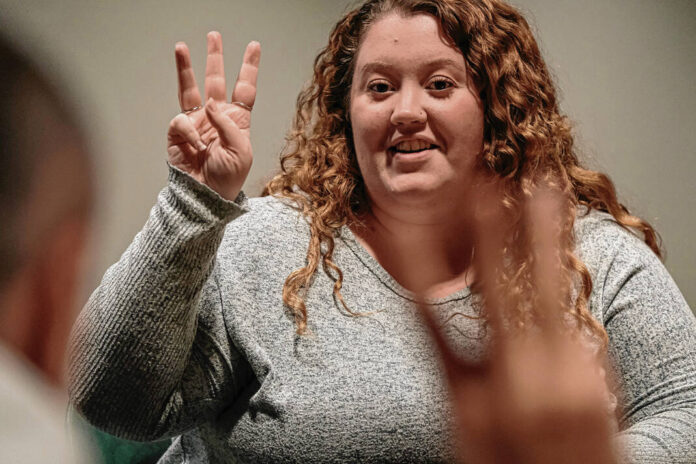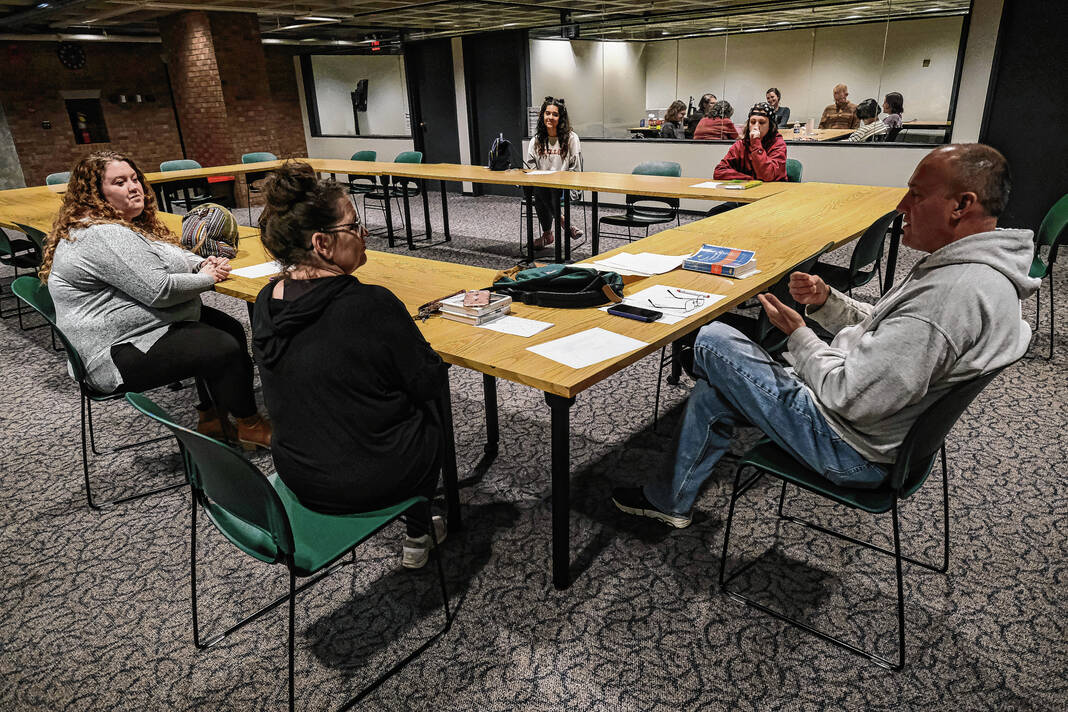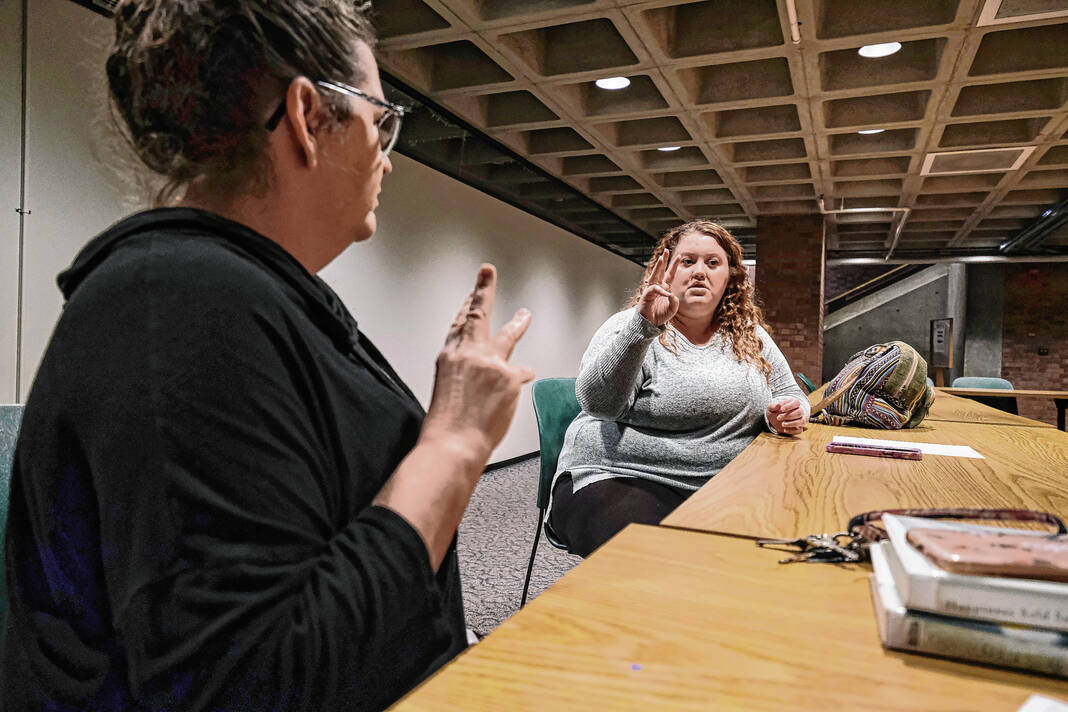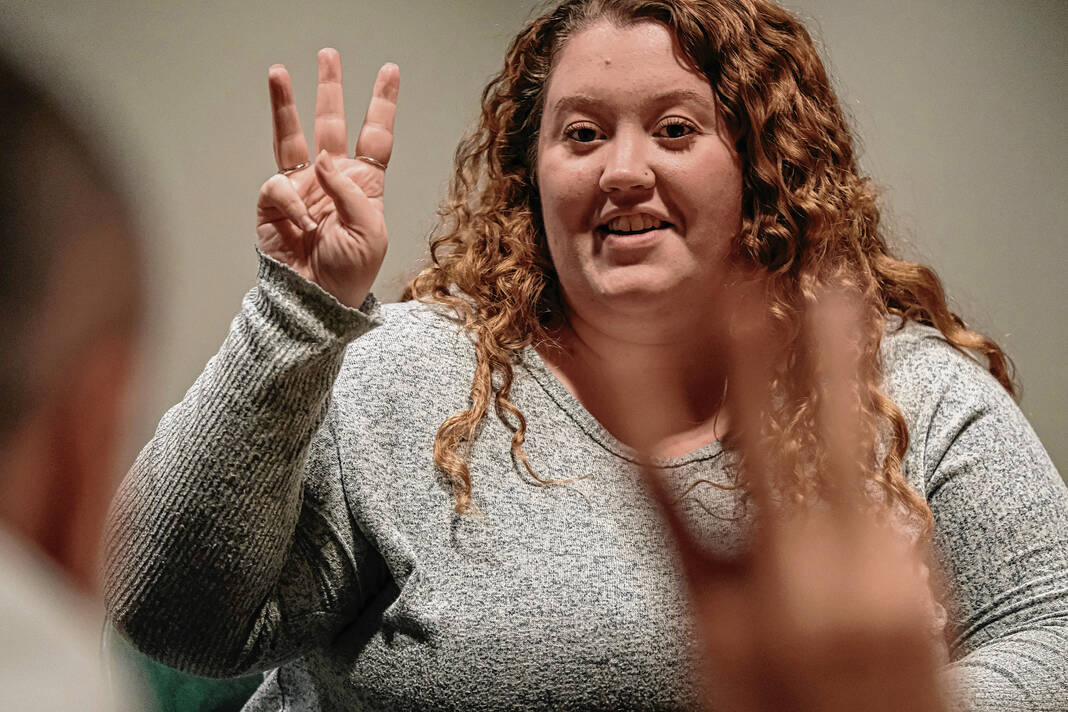
Mike Wolanin | The Republic Aeriel Haney practices signing numbers during an American Sign Language class at the Bartholomew County Public Library in Columbus, Ind., Thursday, Oct. 27, 2022.
Local individuals have formed a practice group to teach themselves and others the basics of American Sign Language.
The group meets every Thursday from 5:30 p.m. to about 7 p.m. at the Bartholomew County Public Library in Columbus. It is free and open to adults of all skill levels.
Mike Ettenberger co-facilitates the group alongside Kathleen Whipker. He said that they are not teachers or ASL instructors but “learners as well.”
“We get together to learn, to help other people learn, to get excited about the language,” said Ettenberger. “They normally start with the basics — the alphabet, numbers, different question words, try to stress the importance of facial expressions.”
They then build upon those basics by teaching about categories such as family members, animals, foods and seasonal terms.
Each session typically begins with a review from the week before, with Whipker asking questions so that group members can become acclimated to sign language and responding to questions delivered via sign. The group then moves on to new terms, works on signing different statements and practices finger-spelling as well. The facilitators also take time to respond to questions that members might have.
“If myself or Kathleen know how to do it, we’ll let them know,” said Ettenberger. “If not, we’ll definitely look it up and find it — because, again, we’re still learning too. I’ve been doing it for about five years and Kathleen’s been doing it for something similar to that. So we definitely don’t know everything; I guess we just know enough to be dangerous.”
He added that ASL is not their first language and that when there are differences in methodology, one should always defer to the practice of their local deaf community.
The study group came together about six to eight months ago. Ettenberger was searching for an American Sign Language group in Columbus and met Whipker, who was studying to be an interpreter and said that the library used to have a group pre-COVID.
The two decided to practice together and formed a new group for anyone else willing to learn. If they garner enough members, they may considering splitting the group into two sections: beginners and continuing learners.
“It’s a good time,” said Ettenberger. “And again, you’re not going to walk out of there fluent, but hopefully you pick up on some basics and are able to communicate with deaf people and then you can go on, if you want to take classes, do whatever you want to do, build upon that.”













